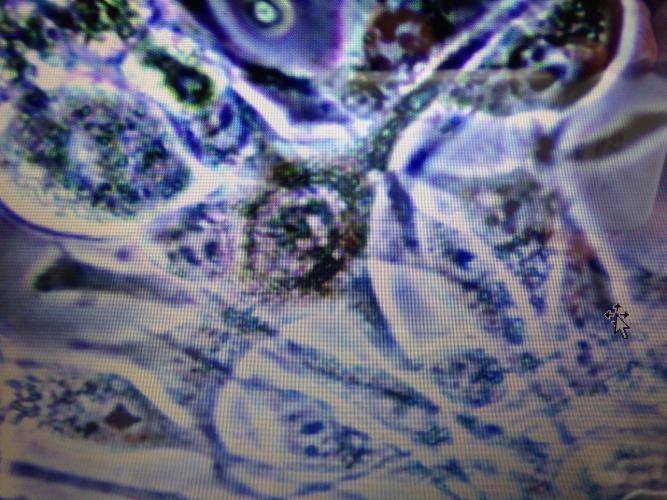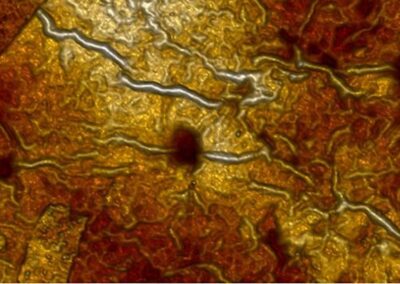Melanin is a naturally-occurring pigment that is largely responsible for skin colour. It absorbs the ultraviolet and blue components of sunlight, thus preventing the photochemical formation of free radicals that can damage DNA in the skin. In darkly pigmented skin, this process is effective in reducing the amount of free radicals formed in cells by sunlight.
In a recent study funded by Cancer Research UK, however, an inter-disciplinary team of scientists at the Charity RAFT, and collaborators at the LCN, and the universities of Newcastle, Sheffield and Saarland have shown that in lightly-pigmented cells, melanin can cause an increase in the amount of free radicals formed compared to cells with no melanin at all.
Dr Rachel Haywood (RAFT) an expert in ESR spectroscopy and its application to skin photochemistry and photobiology, who led the study commented: “Our results confirm that melanin is a photo-protectant when present in large amounts, which is the case in darker skin. However, in lighter skin, melanin may have the opposite effect and act as a photo-sensitiser resulting in the formation of more free radicals, and hence potentially more damage to DNA.” Dr Haywood added: ” Our study suggests a mechanism supporting CRUK’s advice ‘that people who are very fair skinned, especially with fair or red hair, are more at risk of developing melanoma’.”
Both melanin and UV-induced free radicals in various types of human cells were detected by a technique called electron spin resonance (ESR) spectroscopy, which uniquely allows both the types of free radicals present to be identified, and their relative concentrations to be determined.
 Figure: An example of a melanin-containing cell which we all have at the base layer of our skin. In fair-skinned people these cells contain small amounts of pigment that cluster around the nucleus and also bind to DNA within the nucleus. When these cells are hit by UVA light the melanin ‘soaks up the radiation’ acting as a protective barrier. When there is not enough melanin it has the opposite effect of directing the radiation on to the cells DNA causing damage. The DNA is the powerhouse or ‘brain’ of the cell and damage to it can potentially lead to cancer
Figure: An example of a melanin-containing cell which we all have at the base layer of our skin. In fair-skinned people these cells contain small amounts of pigment that cluster around the nucleus and also bind to DNA within the nucleus. When these cells are hit by UVA light the melanin ‘soaks up the radiation’ acting as a protective barrier. When there is not enough melanin it has the opposite effect of directing the radiation on to the cells DNA causing damage. The DNA is the powerhouse or ‘brain’ of the cell and damage to it can potentially lead to cancer
Prof. Chris Kay, an expert on ESR Spectroscopy, who holds a joint appointments at the LCN and the University of Saarland in Germany, commented “The combination of advanced spectroscopic techniques and computer-based simulations, enabled us to disentangle up to five different types of free radicals in a single measurement. This in turn allowed much more robust conclusions to be drawn than was previously possible.”
Link to article in Science Direct: UVA-induced carbon-centred radicals in lightly pigmented cells detected using ESR spectroscopy



